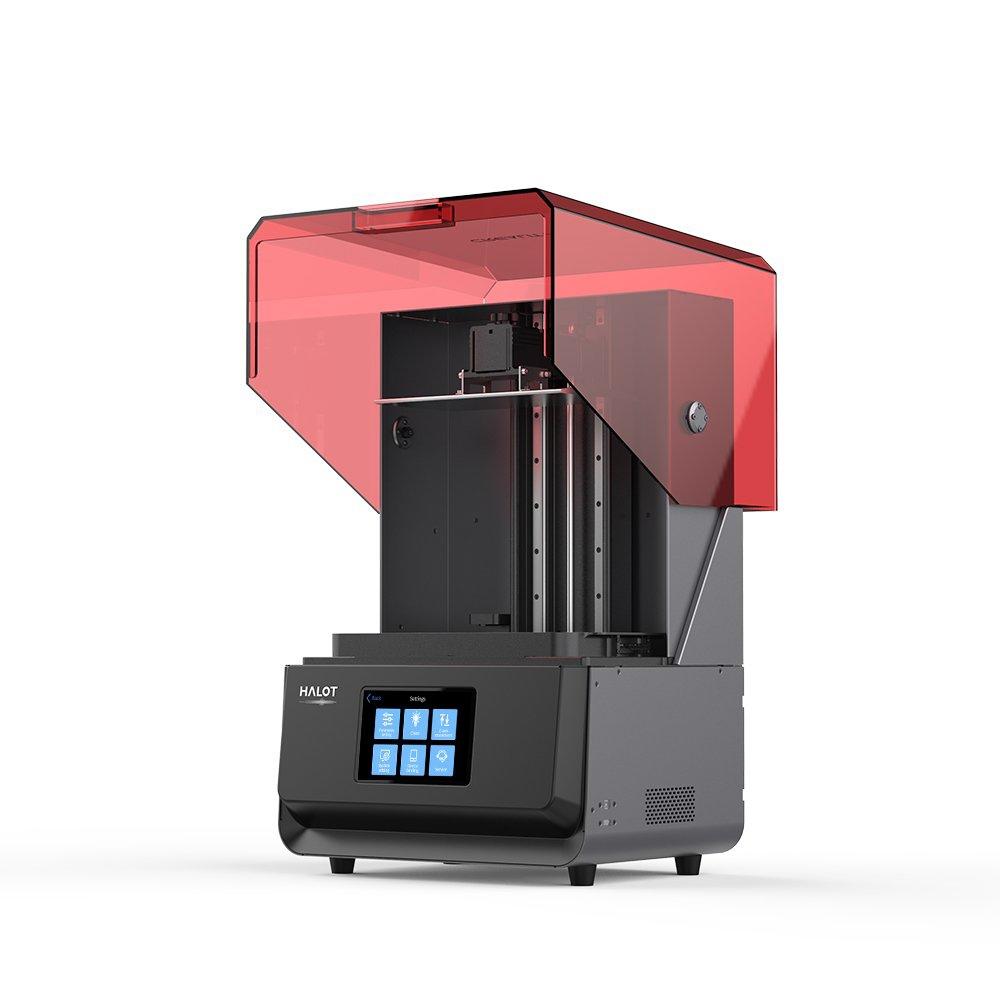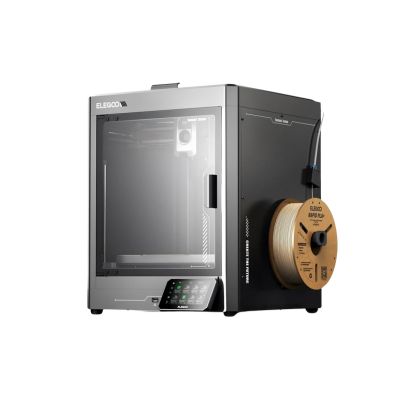Compare Halot Max vs Centauri Carbon
Comparison between the best 3D printers
Choose the best 3D printer at the best price. The cheapest 3D printers are here.
Buy a 3D printer here with 3D Fila.
 |
 |
|
| Model | Halot Max[BUY Halot Max] |
Centauri Carbon |
| Printing Material | Resin | Filament |
| Buy Resin for Creality 3D Halot Max | Buy Filament forElegoo Centauri Carbon | |
| Estimated price | $3000,00 | $500,00 |
| Manufacturer | Creality 3D | Elegoo |
| Release Year | 2021 | 2025 |
| Print Volume [mm] | 293x165x300 | 256x256x256 |
| Printer Size [mm] | 480x387x770 | 500x500x600 |
| Weight [kg] | 32,5 | 17,5 |
| Power Loss Recovery | NO | YES |
| Maximum Resolution [mm] | 0,03 | 0,1 |
| Processor | ||
| Display | Display touchscreen 5'' | Touchscreen 4,3'' |
| Power Supply | 350 W | |
| Connectivity | SD / USB / Wi-Fi | WiFi, SD, USB |
| Operating systems | Windows, Mac, Linux | Windows, Linux e Macbook |
| Date of registration in the system | 2022-11-04 | 2025-02-10 |
| Release date | 2021 | 2025 |
| Extra features | The Halot Max printer stands out for its large print size (293 x 165 x 300 mm) and uses SLA technology. It has an integral light source for improved accuracy and a strong core with an advanced operating system. Its Z-axis module ensures high precision, supported by efficient slicing software. The machine offers online OTA updates and boasts an adjustable layer thickness between 10 and 200 microns. Its XY-axis resolution is 3840*2160, with 0.05 mm accuracy, and an integral 405nm light source. The printer includes a 5" touchscreen and multiple connectivity options, such as USB, Creality Cloud, and HALOT BOX WiFi. With cutting-edge technology, the Halot Max is ideal for printing small models with uniform precision, thanks to its self-developed lighting system and stable printing mechanism, which includes dual linear guides, ball screws, and an intelligent brake system. | The Elegoo Centauri Carbon is a CoreXY 3D printer with an enclosed structure, direct drive extruder, and hardened steel components for abrasive materials. It features automatic bed leveling, a touchscreen, a filament cutting system, and an elongated nozzle designed to reduce clogs. It offers Wi-Fi connectivity for remote file transfer and runs on a Klipper-based firmware, providing advanced control and precise adjustments. |
| Support for multiple colors and materials (AMS and CFS) | NO | NO |
Notes * |
||
| Cost-benefit | 5 / 10 | 8 / 10 |
| Hardware | 1.2 / 10 | 6 / 10 |
| Tela | . | . |
| Print volume | 3 / 10 | 4 / 10 |
| Performance | 9 / 10 | 4 / 10 |
| [BUY Halot Max] |
Conclusion |
| In comparing the Creality 3D Halot Max and the Elegoo Centauri Carbon 3D printers, several key differences emerge, each influencing the overall value proposition and target user base of the respective machines. The Halot Max, with its advanced SLA technology, offers a superior maximum resolution and intricate details in prints, making it an excellent choice for users focused on high precision, particularly for miniatures or fine models. Its larger print volume, although slightly smaller than that of the Centauri Carbon, is supported by cutting-edge features aimed at stability and accuracy, such as a robust Z-axis module and advanced slicing software. However, this sophistication comes at a significantly higher price point, which may not align with the budgetary constraints of many hobbyists or casual users. Conversely, the Centauri Carbon, released more recently, offers a commendable balance of performance and affordability. Its CoreXY design allows for efficient printing and the support of diverse materials, while features such as automatic bed leveling and a direct drive extruder enhance user experience and print reliability. The enclosed structure is particularly advantageous for managing different printing environments and ensuring consistent results. Additionally, the pricing makes it an accessible option for those new to 3D printing or those looking to integrate 3D printing into their workflow without a massive investment. In summary, the choice between the Halot Max and the Centauri Carbon hinges on the user’s specific needs and budget. For professionals or serious enthusiasts prioritizing precision and advanced features, the Halot Max is an appealing but costly option. In contrast, the Centauri Carbon caters well to newcomers and those seeking an efficient 3D printing solution at a more reasonable price, making it an excellent value in the market. Ultimately, selecting the right machine will depend on the intended use, desired print quality, and financial considerations. |

